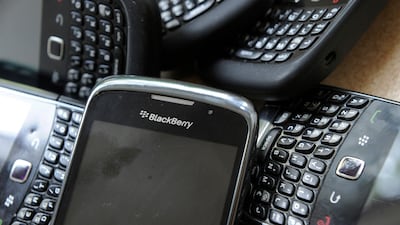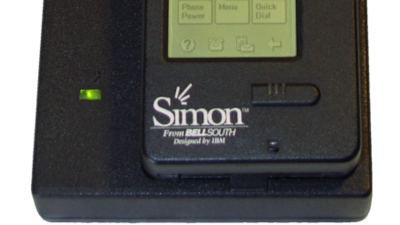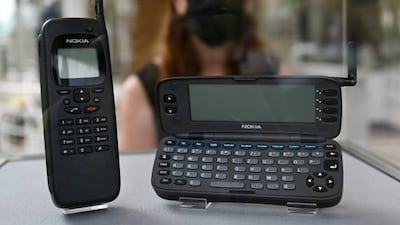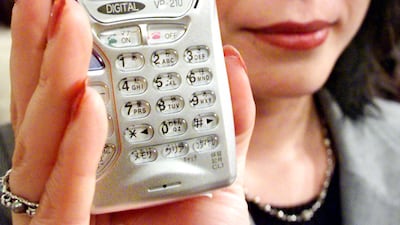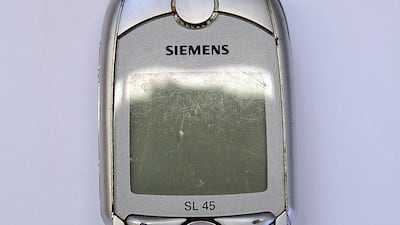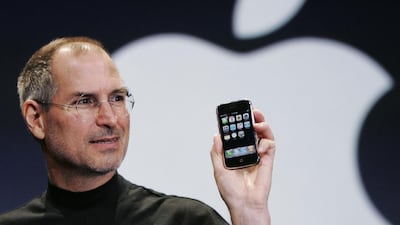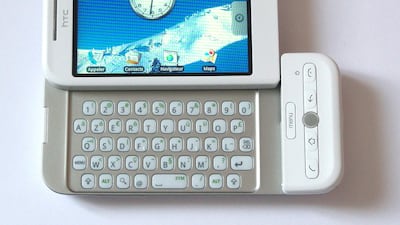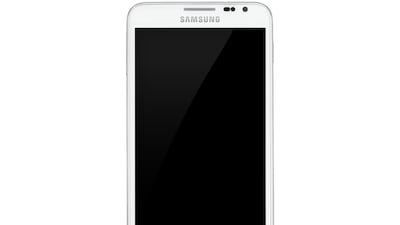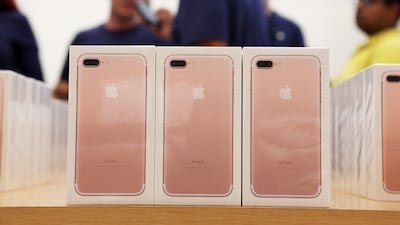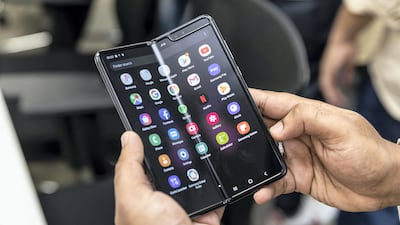Samsung Electronics is all prepped to introduce its newest flagship line-up, the Galaxy S22, on Wednesday.
If purported leaks are to be considered, the world is in for another turning point in the rapidly evolving smartphone market.
Numerous reports have indicated that the highest-end device, the S22 Ultra, will have a built-in slot for the S Pen, the signature accessory of the Galaxy Note series. Not only would it throw the popular phablet’s future into uncertainty, it would also drive home Samsung’s point of pushing foldable devices into the mainstream, with its Z series replacing the Note.
Over the decades, there have been several iconic and memorable launches of mobile phones. Although some had a low-key launch, they went on to have a huge influence on the industry.
Here are 10 of the most iconic mobile phones we’ve seen, in chronological order. It was tough to narrow down the list to just 10, so honourable mentions go to Huawei’s P and Mate series, the “flagship killer” OnePlus, Google’s attempts with the Pixel and everything BlackBerry.
Motorola DynaTAC 8000X (1973)

The rest of the competition can claim many firsts, but only Motorola can lay claim to releasing the first commercially-available portable cellular phone, the DynaTAC 8000X, in 1973.
Weighing over a kilo and needing a whopping 10 hours of charging for only 30 minutes of talk time, it was indeed huge – both literally and figuratively. It also came with a hefty price tag: $3,995, which is roughly $25,000 in today’s dollars.
IBM Simon (1994)

While not technically a smartphone – a term that would not be coined until over a decade later – the IBM Simon has been retroactively labelled as the world’s first smartphone, endorsed even by Microsoft and the World Economic Forum.
Thanks to its advanced features at the time, this personal digital assistant included a touchscreen (yes, even before the iPhone), e-mail capabilities and applications (before apps were cool), including a calculator, calendar and sketch pad. And no, neither Palm nor Microsoft were the first to include styluses on their personal digital assistants, because Simon beat them to it.
Nokia 9000 Communicator (1996)

In the mid-1990s, connecting to the internet and sending e-mails was limited to certain businesses and individuals. Nokia sought to bring these services to the masses with the launch of the 9000 Communicator in 1996.
It was a novel idea – a portable phone with a (full) keyboard and, especially in subsequent versions, great graphics. But, as with any new concept, its hefty price tag ($800 at launch, equivalent to more than $1,400 today) was a major sticking point.
Kyocera VP-210 (1999)

There’s quite a toss-up on whether it was Samsung or Sharp that first released a mobile phone that had a camera in 2000. But the most widely recognised is the Kyocera VP-210, which debuted in 1999.
The VP-210 only had a 0.11-megapixel front camera, could store up to 20 jpeg files and send two files per second on Japan’s cellular network. While having a camera embedded into a phone wasn’t a Kyocera original, the device was the first to be commercially released, and only in Japan. It would have probably been a viral sensation worldwide if social media had existed back then.
Siemens SL45 (2000)

Even at the start of this century, owning a mobile phone was a luxury, with considerable tariffs. Siemens decided to incentivise consumers by adding a new feature: music.
The SL45, which was introduced in 2000, was the first mobile phone with memory expansion (a whopping 32MB at the time) and the ability to store MP3 music files – about 10 tracks, assuming each song was about 3MB. People could listen to songs straight out of a device that wasn’t a Walkman or Discman.
Later that year, Apple shook up the industry with the iPod, which could store a thousand songs, starting the shift towards digital music that would transform the music industry.
Apple iPhone (2007)

No list such as this would be complete without the iPhone, Apple’s game-changing, tech world-altering device which spawned the App Store and several other services. Back then, the device was a bold move from Steve Jobs and Co, even drawing mockery from then-Microsoft chief executive Steve Ballmer.
Mr Ballmer couldn’t have been further wrong; for perspective, in the quarter ended March 31, 2012, iPhone revenue beat the entirety of Microsoft’s, $22.7 billion to $17.4bn. It is a trend that has continued; Apple is the world’s most valuable company. Its market capitalisation hovering around the $3 trillion mark, a level that it breached on January 3.
HTC Dream (2008)

Amid the ocean of Android devices today, it was the HTC Dream that led the first wave in 2008. It had Gmail, a customisable user interface and the original Android Market.
Most people who made their transition to a Google Android-powered smartphone over a decade ago were unaware about the OS their device was running on. All they probably knew was that it was something called android, which was the answer to Apple’s iOS onslaught and which accounts for a massive 70 per cent of the market as of January 2022, according to Statista.
Samsung Galaxy Note (2011)

Before the original Note, Taiwan’s HTC had several devices that had styluses. But it was Samsung that nailed the tech recipe right: a big screen, intuitive graphics and, of course, an advanced pointing device in the S Pen.
The Galaxy Note – launched a year after the original Galaxy S – would become the standard for stylus-enhanced mobile devices for a decade, and remained virtually unchallenged so far. But with the reported integration of the S Pen with the Galaxy S22 Ultra, it will be interesting to see what the future of the Note holds.
Apple iPhone 7 (2016)

Apple is no stranger to making major hardware changes. It removed the floppy disk drive from the 1998 iMac, ditched the optical drive for the 2008 MacBook Air and did away with a physical keyboard on the original iPhone in 2007.
All these caused varying degrees of uproar, but maybe none more than for Apple’s controversial move to kill off the 3.5mm headphone jack port in 2016’s iPhone 7 – at the same time launching the original AirPods. Its competition soon followed suit, most notably Samsung, which initially mocked the move before also removing the headphone jack from the Galaxy Note 10 in 2019.
Fun fact: Apple wasn’t the first modern smartphone brand to kill the headphone jack; that honour belongs to the Oppo Finder, released a full four years ahead in 2012.
Samsung Galaxy Fold (2019)

Sure, Samsung wasn’t the first to release a foldable smartphone – that title belongs to the Royole FlexPai from China, a low-key launch in 2018 – but the South Korean company was the first to push out the device into the mainstream consumer market.
Today, the Fold is in its third iteration, accompanied by the second generation of the Flip line. Samsung’s bet on foldables is big, given the fact that it has essentially replaced the Note with them – although the Note is expected to live on in the Galaxy S22, which is just hours away from launch.
